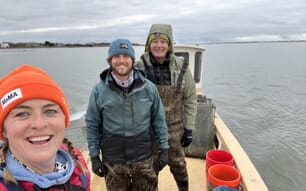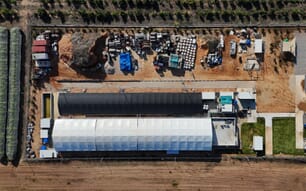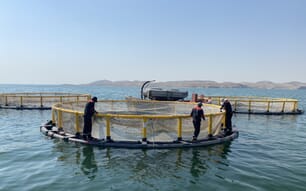Habitat and biology
Therefore, this species occupies a broad variety of microhabitats, expanding its zonational range from the high intertidal to subtidal regions and its salinity range from estuarine areas to fully oceanic seawaters. Highly tolerant of a wide range of environmental conditions, the blue mussel is euryhaline and occurs in marine as well as in brackishwaters (Baltic) down to 4 per cent, although it does not thrive in salinities of less than 15 per cent and its growth rate is reduced below 18 per cent. Blue mussels are also eurythermal, even standing freezing conditions for several months. The species is well acclimated for a 5-20 °C temperature range, with an upper sustained thermal tolerance limit of about 29 °C for adults.

Its climatic regime varies from mild, subtropical locations to frequently frozen habitats.M. edulis typically occurs in intertidal habitats, although this distribution appears mostly controlled by biological factors (predation, food competition) rather than by its capacity to survive subtidally, as demonstrated by offshore mussel culture using longlines.
When predators are lacking, M. edulis subtidal aggregations can reach a 1.2 m thickness and individuals attain large sizes in a relatively short period of time. Although blue mussels can live up to 18-24 years, most cultured mussels are produced in less than 2 years. In the wild, M. edulis settles in patches of open spaces, quickly building a dense population referred to as ‘mussel beds‘. Although showing a seasonal pattern, the reproductive cycle of M. edulis can exhibit considerable temporal and spatial variation.
Gonads are usually ripe by early spring in European waters; mussels commonly show a significant loss of condition following spawning. Rapid gametogenesis leads to fully ripe gonads again in summer. Although directly driven by food availability and temperature, reproductive cycles in M. edulis may vary latitudinally, both in terms of onset and duration. High fecundity and a mobile free living larval phase are two characteristics that have contributed to the development of mussel culture; in fact, the natural abundance of M. edulis larvae has been the key for such development.
Production systems
Seed supply
Most mussel culture depends on the use of natural spat because of the generally abundant supply. However, hatchery technology is available.
Natural spatfall
Mussels are characterized by high fecundity and a mobile free living larval phase, which have facilitated its widespread distribution. Seed availability therefore greatly influences which culture techniques are used. When using wild seed, various spat collectors are employed, including polyethylene and palm-coconut fibre ropes.
Hatchery production
One of the key issues for mussel culture is seed supply. Hatchery-produced seeds were initially used during the 1970s in China to supplement wild set spat; but now there is a reliable and abundant supply there, sufficient to sustain present production. Shellfish hatcheries enable the industry to produce seed consistently and at an acceptable cost, as well as to work with polyploids, hybrids, and selected strains. Although the use of hatchery spat production is not yet commonplace, this technology may also provide an option for addressing the irregular spat settlement that has affected natural populations over the last 10 years in European waters.
Hatchery production is based upon conditioning adult mussels by using algal food and temperature control. The natural maturation cycle is actually mimicked at the hatchery. Mature mussels are cleaned up and hung as a group in larval tanks. M. edulis spawning is induced by thermal shock or by stripping. Once spawning is completed, 24 hours are required for the larvae to reach the straight hinge stage. Larvae are fed ad libitum and allowed to grow until they are ready to set onto ropes (13-15 days). Deployed in setting tanks, mussels are transferred at a 1 mm size to a nursery, where they will remain until they reach 6-10 mm; then the spat is moved outdoors into grow-out systems.
Ongrowing techniques
The rapid growth rate of mussels ensures that a marketable sized product can be reared in a short time period (<2-3 years). The fact that they use byssus threads to attach themselves to any firm substrate facilitates farming, and represents a distinguishable feature from other cultured molluscs. Several techniques are used for ongrowing, including tidal (on-bottom and bouchot type) and subtidal (on-bottom, raft and longline), as described below.
On-bottom culture
Extensive on-bottom culture is based on the principle of transferring mussel seed (spat) from areas where they have settled in great abundance to culture plots where they can be re-laid at lower densities to obtain improved growth and fattening, and to control predation. Seed is dredged from the bottom of the seabed and then re-laid into growing sites (tidal or subtidal plots), where carrying capacity is optimal. The growing sites are usually prepared, to stabilize the bottom before seeding. Although variable, it is considered that around 1 tonne of marketable mussels can be harvested from 1 tonne of re-laid spat (including the debris dredged with it). A 25-30 tonnes/ha stocking biomass (half-grown mussels) re-laid in spring takes 14-24 months to mature (yield 50-70 tonnes live weight/ha). Mussel growers must remove predators and macroalgae during the rearing cycle to facilitate growing. A rewatering process can be carried out before marketing to eliminate weak and damaged mussels.
Bouchot culture
The bouchot technique, which may combine spat collection with ongrowing, has not drastically changed since its origin (13th century) in France. Wooden poles are set into the intertidal seabed in rows (bouchots). Each pole is 4-7 m long, 15-25 cm in diameter, and protrudes 2-3 m above the seabed. Several types of wood are currently used, including pine, oak and, more recently, Brazilian squared hardwood. The rearing structures are 50-60 m long, with 120-130 poles in single or double lines for spat settlement and 80-90 poles for ongrowing. Bouchots should be spaced 25 m apart. Spat settlement occurs intensively in spring directly onto the wooden poles or onto the horizontal coconut fibre ropes strung on the poles before settlement. The seed is then transferred in summer to tubular nets that are reattached around the growing poles. The mesh tubes are nailed on at both ends. Eventually, mussel seed spreads to cover the entire pole. Each pole produces around 60 kg live weight of mussels.
Raft culture
To expand mussel production, Maine (USA) mussel producers are developing suspension culture using 12 m triple pontoon raft systems. Each raft produces 45 tonnes of mussels in an 18 month rearing cycle.
Longline culture (rope culture)
This practice is the most recent development for mussel culture. Although various types exist, subsurface longlines have been developed in France to resist storm and wave effects, and are particularly adapted to areas showing high tidal cycles. This technique allows highly mechanized culture and yields 18-20 tonnes/ha/yr. A multi-longline system has also been developed in Norway and Sweden, using 7-9 headlines. Temporarily submerging mussel longlines is part of a farming practice designed to lower the crop below surface ice during winter months (Canada). Control of buoyancy is necessary for this system. Floats are connected together by horizontal lines that support a large number of vertical ropes where mussels are grown. Seed is either caught on collector ropes hung from the floating lines, or gathered from natural settlement in intertidal areas. Thinning and reseeding onto grow-out ropes or into stockings are carried out until the mussels reach marketable size.
Harvesting techniques
Once the mussels reach a marketable size (about 40 mm, which takes 12-15 months), various harvesting techniques are used, depending on the area and rearing practices. Mussels grown on wooden poles are harvested by hand or, more commonly, by using a hydraulic powered system that removes all the mussels at once. A cylinder is lowered to the bottom, closed, pulled up and mussels are dumped into a trailer or into inboard containers. Hydraulic forks are also used for unloading. Dredges are currently used for on-bottom culture; an example is the four steel dredge (1.9 m wide) system operated by a hydraulic or pneumatic 8-drum winch in the Netherlands. On hard bottoms, round steel ground dredge bars are provided with 2x2 cm steel blades.
Handling and processing
In unpolluted areas, dredged mussels are cleaned, and sorted by size directly on the decks of the boats with automatic equipment. M. edulis can also be temporarily stored in rewatering plots where they remain for 2 weeks, during which they excrete mud, grit and sand and recover from dredging stress. Then they are transferred to processing plants, where automatic equipment is currently used for washing, declumping, debyssing, and grading. Marketable mussels are packed in 15-25 kg bags and normally sold for the fresh market. However, blue mussels are marketed in several other ways: frozen – ice packed - vacuum packed, cooked and processed.
In the Netherlands, automated equipment is used for washing, declumping, grading, and debyssing, followed either by direct marketing (70 percent fresh market) or by continuous pressure cooking, as well IQF (Individually Quick Frozen) freezing. In Denmark, it is considered that longlined mussels will only be commercially successful if sold live, because of high operating-labour costs. These products are not able to compete with the wild mussels that are destined for canning (boiled and put into jars or tins). Live mussels can be exported in plastic or jute bags, either for the fresh market or for the processing industry that boils mussels for sale.
Mussel commodities are also produced: boiled mussels for single frozen and garnishing; canned non-perishable commodities such as mussels in butter, or smoked and packed in oil in tins. Perishable mussel commodities are also produced, such as mussels in vinegar that are sold in jars, tins and buckets. Almost the entire French production is sold directly for the fresh market. In China, part of the production is marketed fresh but most is steamed and dried. Some mussels are also cooked to produce oyster sauce, or directly used as feed for cultured shrimp and Rapana snails.
Production Cycle

Production costs
Production costs are highly variable; cost effectiveness depends directly on site productivity, rearing density and cultural practices. The use of automatic equipment or dredges which reduce labour costs tends to optimize profitability. The level of supply, as well as competition from wild fishery production, affects market prices and therefore the overall yield. Moreover, spat supply and the rate of predation by ducks, seagulls and crabs are significant factors in determining overall production costs and yields.
| DISEASE | AGENT | TYPE | SYNDROME | MEASURES |
|---|---|---|---|---|
| Parasitic infection | Marteilia maurini | Protozoan | Potentially lethal; haemocyte infiltration of digestive gland (connective tissue and epithelia); extensive destruction of the digestive gland in heavy infections |
No curative measure; prevention & site selection;monitoring mussel transfer |
| Viral disease | Picornaviridae-like virus | Virus | Heavy mortalities | |
| Vibriosis | Vibrios | Bacteria | Not specified | |
| Rickettsiosis | Rickettsia-like organisms; Chlamydia-like organisms | Bacteria | Microcolonies in the epithelial cells of the gills and digestive gland | No curative measure; prevention & site selection |
|
Various parasitic infections |
Steinhausia mytilovum | Micro-sporidian | Infects cytoplasm of mature mussel ova; incites a strong haemocyte infiltration response | No curative measure; prevention & site selection; monitoring mussel transfer |
| Cliona | Sponge | Penetrates the periostracum forming holes in the outer surface and a tunnel network throughout the shell | None | |
| Prosorhynchus sp. | Bucephalid trematode | Mantles show abnormal colouration (patchy yellow-white) in heavily infected individuals; castration; weakness; gaping | None | |
| Polydora ciliata | Polychaete annelid | Burrows & blisters; mortalities; reduced condition index; loss of market quality | None | |
| Pea crab parasites | Pinnotheres pisum | Crustacean | Reduces market value |
No curative measure; decrease stocking density |
| Red 'worm' diseases | Mytilicola intestinalis; Mytilicola orientalis | Copepods | Usually commensal but may retard growth |
With regard to shellfish regulations, preventive measures aim to limit imports only from countries where no outbreak of disease occurs according to the list specified by OIE International Aquatic Animal Health Code (notifiable pathogens). Although not a notifiable pathogen, the protistan parasite Marteilia maurini is hosted by the blue mussel, in contrast to the notifiable M. refringens, the oyster epizootic parasite. This indicates that mussel movements are not affected by legal regulations on notifiable diseases. Although high mortalities caused by parasites or infectious diseases have not yet been encountered in M. edulis, several parasites may be potentially harmful. Mussel transfers with parasites must be conducted with caution. Monitoring M. edulis populations and parasites is critical to prevent and limit associated risks.
February 2009





